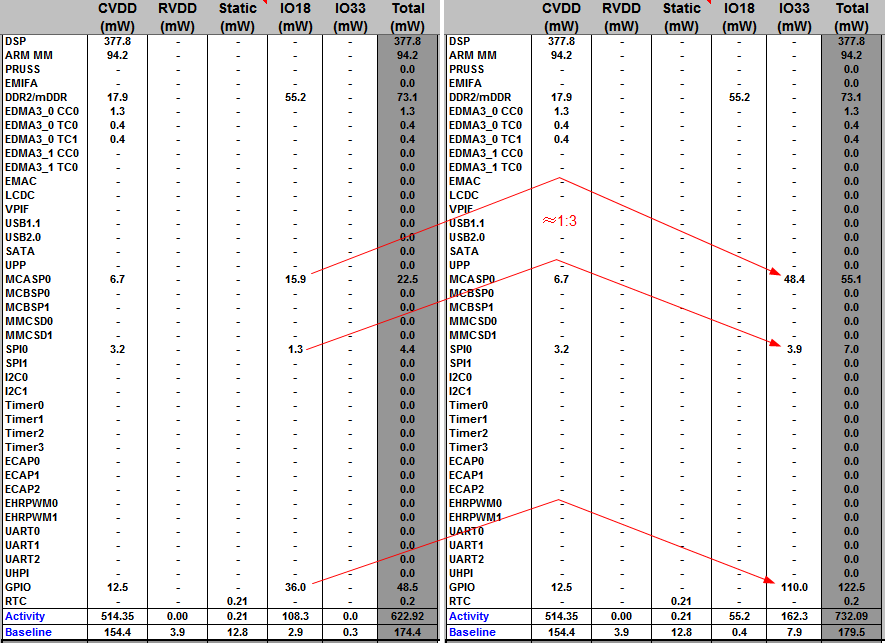Hi,
I would like to ask a question with I/O power.
I have no experience with 1.8V I/O pin before, but when I am trying to calculate power consumption difference between these two IO voltages, I observed that IO33 consumes approximately 3 times power than IO18.

So it seems that the difference between 1.8V and 3.3V voltage supply, in terms of power consumption, is based on the well-known basic formula:
P = U2/R
3.32 : 1.82 = 3.361, very close to the ratio revealed by the spreadsheet.
Inaccuracy
There are also cells in the table for entering trace length. For example:

When trace length doubles, because R∝L, R also doubles. Then
1. By P = U2/R, P should get down to half
2. By spreadsheet, P doubles ⟹ suggesting P=I2R∝R ⟹ I(current) constant.
We clearly have contradicting results.
But clearly I cannot be constant, otherwise if trace length triples, quadruple or even longer, a constant current means voltage drop along the trace would also change by these numbers, then the voltage at the receiving end might not be enough to drive the load.
I have very little knowledge with semiconductor, but I guess the actual model might be much more complicated than formulas included in the spreadsheet; and the purpose of this spreadsheet is only for a rough estimation, so the simplistic formulas it used leads to the observed inconsistencies above.
Zheng
